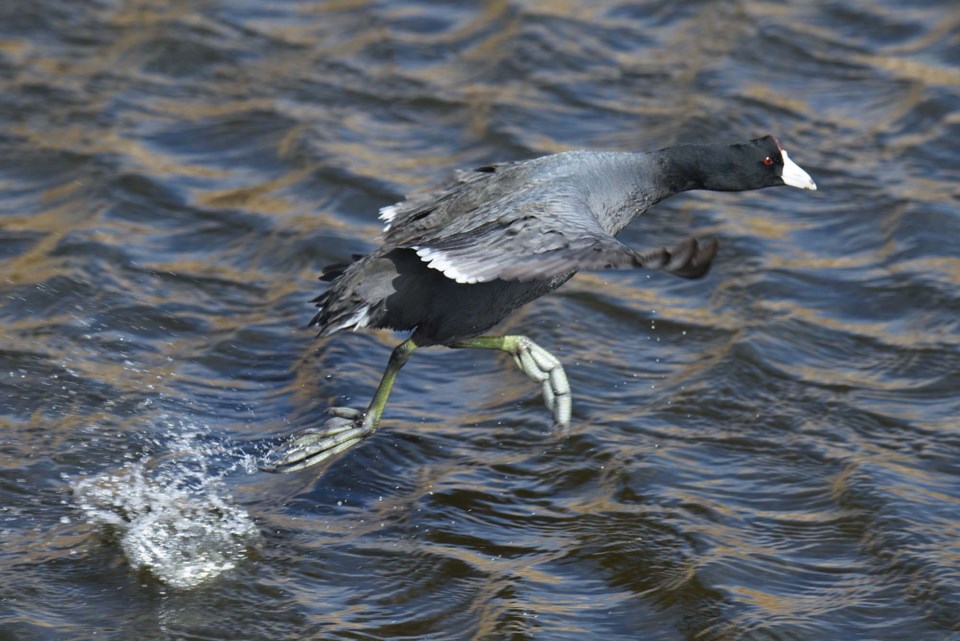It’s summertime, and the nature lover in you is looking for wildlife. Here are a few places in and around St. Albert where you can spend the day looking for the birds, beasts, blossoms, and bugs of Alberta.
Birds and beasts
Birds and beasts are everywhere in the St. Albert region, but if you want to see plenty of both, head down to Lois Hole Centennial Provincial Park and Big Lake. Not only is the lake host to hundreds of migratory birds, but its surrounding wetlands are home to beavers, muskrats, moose, coyote, deer, and tiger salamanders.
You can get up close and personal with birds at the John E. Poole wetland boardwalk, where you can spot mallards paddling underfoot, red-winged blackbirds singing from the railings, and barn swallows zipping past your nose. Listen carefully, and you might hear the “ker-wee! Ker-wee!” of a Sora hiding in the reeds. Use the binoculars at the BLESS viewing platform to check out tundra swans and other birds on the far shores of Big Lake, and visit Elke’s Point in Riel Pond if you want some peace and quiet. The forested trails south of the wetland offer wild roses, bluebells, frogs, squirrels, mud, and mosquitoes.
Lois Hole Park guests should bring binoculars and a camera, and consider going in the early morning when birds are most active. BLESS Summer Nature Centre co-ordinator Meghan MacDougall will be there on weekdays this summer to answer all your wildlife questions.
East of St. Albert, Elk Island National Park is the place to be if you want to behold big beasts. The park is home to a large herd of wood and plains bison, as well as black bears, elk, deer, coyote, and timber wolves.
Summertime visitors should be extra cautious around the bison, as they are in the middle of rutting season and extra aggressive, Parks Canada says. Stay in your car and/or at least 100 metres away from any bison in the park to stay safe.
Also in the park are up to 250 species of birds, including the ruffed grouse, common tern, and snowy owl. You might want to ask park staff for suggestions on where to find these birds, as they’re often pretty spread out. The Living Waters Boardwalk is often a good place to start if you want waterfowl. Parks Canada says dawn and dusk are the best times to spot wildlife, as many animals shelter in the trees during the day.
Admission to Elk Island Park is $17.50 per family, $9 for an adult, $7.75 for a senior, and free for anyone under 18. Visit parks.canada.ca/pn-np/ab/elkisland for details.
Blossoms and bugs
If you want bugs and flowers, check out the St. Albert Botanic Park down on Sturgeon Road in St. Albert. This volunteer-run garden is host to hundreds of exotic and native trees, shrubs, and blossoms and free to explore all summer long.
The Richard Plain Rose Garden is probably the most photogenic place in the park, with its sparkling fountain and concentric rings of roses offering an ideal backdrop for family photos. Insect enthusiasts should bring their macro lenses to the Cottage Garden, whose bewildering array of blossoms draws a huge variety of bees, ants, spiders, beetles, butterflies, and caterpillars. You won’t find any Asiatic lilies in the park this summer — they had to be replaced because of a fungal pathogen, said longtime park volunteer Richard Plain — but there are still plenty of peonies, day lilies, and sunflowers around to brighten your day.
For more wild fare, check out the Wagner Natural Area west of St. Albert on Hwy. 16. A unique mix of prairie, forest, and marshy marl ponds, you can find cute yellow lady’s slippers orchids, blundering butterflies, darting dragonflies, chorusing frogs, and plenty of mud along its boardwalks. Guests should stick to the area’s marked trail to protect sensitive vegetation and bring rubber boots and bug spray.




